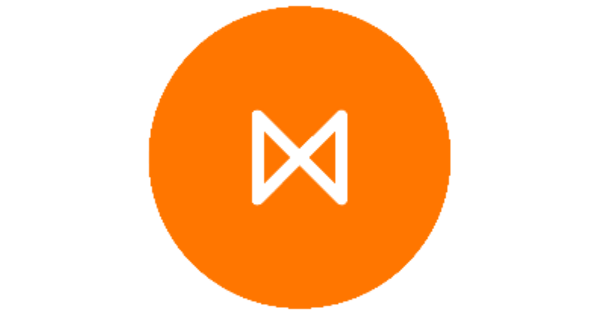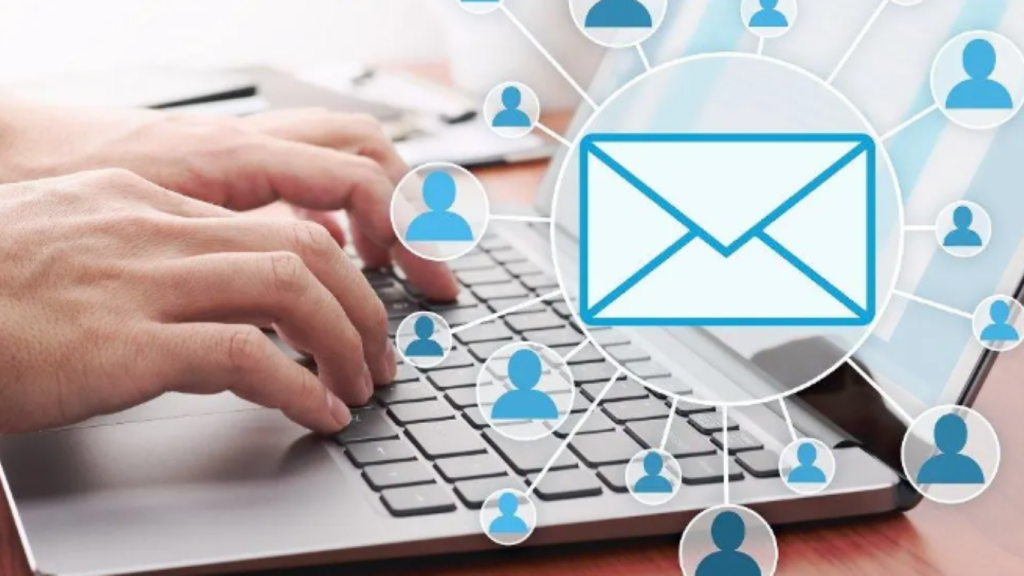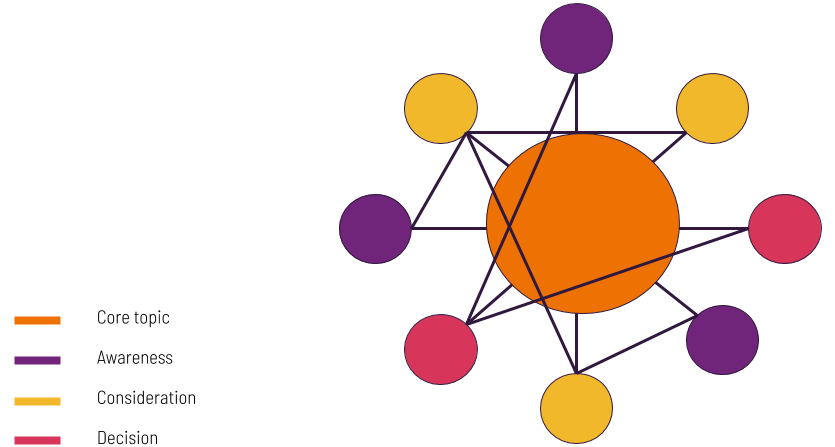What’s the first thing you do when you wake up? If you’re like a lot of consumers, you might turn off the alarm or check your inbox (after meditating and journaling, of course!). Email remains a huge part of our lives—in fact, over 300 billion emails are sent per day— THREE HUNDRED BILLION! Which means that your subscribers’ inboxes are likely just as full as your own. For small businesses, this can make email marketing overwhelming. But how are you supposed to cut through peoples’ noisy inboxes and actually make them complete an action? Where do you even begin?
Find out the answer to those questions and more on this episode of Forward Thinking.
For every $1 invested in email marketing, your business can gain an average of $38 back. Initiate and build your email marketing’s ROI as Kalyn New, senior director of product and customer marketing at Campaign Monitor, delves into the fundamentals and steps to get started.
Campaign Monitor’s platform makes connecting with your audience through email marketing and automation tools extremely easy!
Table of Contents
ToggleThey use drag and drop technology to create beautiful custom and optimised emails for over 250,000 customers globally.
What you will learn in this episode:

- How your business can get started with email marketing
- Assessing your customers with the customer life cycle
- The retention aspect of email marketing
- What frequency of email send-outs work best
- Other ways your business can personalise email marketing
- Relevance and timeliness
- How to apologise after an email marketing snafu
- The best ways to obtain customer information
- How your brand can project your brand voice and uniqueness
- What defines a good ‘customer’ for your brand
- The user journey for Campaign Monitor’s app
- The four steps of understanding your customer life cycle
Notable quotes:
- “It costs four times more to acquire a customer than it takes to retain an existing customer”
- “Give the customer control when and how they want to hear from you”
- “Every email you send to a customer, it should always come back to the ‘so what?’ factor”
- “It’s really dependent on what information you have about your customers and how you use that”
- “All customer communications have to be relevant and timely to that individual subscriber”
- “B2B marketing and B2C marketing is not all that different in terms of how you write it”
Resources mentioned:
- Campaign Monitor
- CM Group
- Emma
- Cellarmasters
- Customer life Cycle
- Preference Center
- Skip app (coffee)
Book recommendations:
- Lean in by Sherill Sandberg
What business would you build on Mars:
I’d approach it like I’d approach anything here on earth. The first thing I’d do is understand the current landscape: What’s available? What’s on the market? What do the martians need that they don’t have? Understand what those needs are first and try not to push a product or a service on them.
Surveys and interviews, as boring as they sound, are super helpful to either validate the assumptions that you already have… And understanding where the martians are consuming their media? How do they like to be spoken to and making sure you’re bringing a message to them – making it as easy as possible. The “so what” factor is important in this as well…
Not underestimating the power of testing. Whether it’s iterating over and over or ABCDE XYZ testing. If you approach it that way, me and Elon would be very successful.
Reach Kalyn New here:
Transcript
Daren (00:04):
What’s the first thing you do when you wake up? If you’re like a lot of consumers, you might turn off the alarm and then check your email inbox. After meditating and journaling, of course. Email remains a huge part of our lives. In fact, over 300 billion emails are sent per day. Yes, 300 billion, and it keeps growing year over year. This means that subscriber’s inboxes are likely just as full as your own. For small businesses, this can make email marketing overwhelming. But how are you supposed to cut through people’s inboxes and actually make them complete an action? Where do you even begin? Find out the answer to those questions and more on this episode of Forward Thinking.
Daren (00:51):
Hey everyone, I’m Daren Lake, the audio content manager here at Metigy. Welcome to Forward Thinking, a podcast by Metigy. In this series, we speak with inspirational business owners, brands, and marketing experts to learn from their experiences on the frontline and uncover what it takes to build a world-class business.
Daren (01:12):
Imagine if every dollar invested in email marketing, your small business could gain an average of $38 back. That’s actually what Kalyn New, senior director of product and customer marketing at Campaign Monitor is going to talk about in this episode. She’ll delve into the fundamentals and steps of how to actually get started in that. Campaign Monitor’s platform makes connecting with your audience through email marketing and automation tools extremely easy. They use drag and drop technology to create beautiful custom and optimized emails for over 250,000 customers globally. A few things you’ll learn from Kalyn in this episode, how your business can get started with email marketing, what frequency of email send-outs work best, how to apologize after an email marketing mistake, what defines a good customer for your brand, the four steps of your customer life cycle, and much more. Let’s get into the episode with Kalyn and Metigy’s head of content, Brendan Hill.
Brendan Hill (02:06):
Kalyn, welcome to the show.
Kalyn (02:08):
Thank you for having me. I’m excited to be here.
Brendan Hill (02:10):
Yeah. I’m excited to talk about email marketing. But before we get to that, can you tell us how you first got involved with marketing?
Kalyn (02:16):
Yeah, so I took a marketing class in high school when I was about 14 or 15 years old and just really fell in love with marketing and knew that that’s what I wanted to do with the rest of my life. So I’m a very organized, pragmatic person. So it’s like, I made my decision when I was 15 and just kind of ran with it from there.
Brendan Hill (02:37):
Awesome. And you’re enjoying the journey so far?
Kalyn (02:40):
Yeah. So I did a marketing degree at uni and then as soon as I finished uni in the States, I actually moved to Australia and started in at Cellarmasters not long after that.
Brendan Hill (02:49):
What are some of the differences between marketing in Australia and the US that you’ve seen?
Kalyn (02:54):
That’s a good question. I think even though I did my uni degree in the US, I’ve really only worked in my professional career in Australia. Before doing an 18 month stint in Nashville last year is actually where I first started working for Campaign Monitor and then moved back to Sydney. So I wouldn’t say there’s a lot of differences in terms of the principles, but I do think that there are differences in the way that the countries consume media and kind of where you find your customers.
Brendan Hill (03:24):
Interesting. And obviously we’re going to take a deep dive into email marketing today. First of all, I wanted you to clarify a death for me. So is email marketing dead?
Kalyn (03:34):
No, email marketing is not dead. People try to say that all the time and it is just not true. Email marketing is still the highest return on investment channel in terms of all marketing. So every dollar you spend on email, you get about $38 back, which is a huge return. And if you think about it, email is really the only digital channel where someone has invited you in. They’ve had to sign up somewhere, they’ve had to give you their permission, they’ve said, I want to hear from you, every week or every month. Or I only want to hear about this type of content or this type of content. And so they’ve given you permission. They’ve invited you in. So it kind of makes sense when you think about it like that.
Brendan Hill (04:11):
Yeah. And there’s some crazy statistics that I researched for the podcast.
Kalyn (04:16):
You might know more than I do.
Brendan Hill (04:18):
No, no, no. There’s a couple of really interesting ones. So, 80% of retail professionals indicate that email marketing is their greatest driver of customer retention. And the next closest was social media, identified by 44%. But a really interesting one was the organic reach on Facebook. So it’s 6%. And then on the flip side, open rates for emails, usually between the 20% to 30% range, depending on the quality of your list.
Kalyn (04:43):
Yeah, the stats speak for themselves. Email is not dead.
Brendan Hill (04:47):
Yeah. That’s right. That’s right. And so how can early stage businesses, they’re listening today. Maybe they’ve started a bit of an email campaign. Maybe they’re looking to start. What are the best ways for these guys to get started?
Kalyn (05:00):
Yeah. Every message that you send to a customer, whether it’s email or otherwise, I think it should all come back to the so what factor. Or why are you sending this? Why are people going to care? Just because it might be important to you, it might not be important to customers. So you might say, “Oh, we’ve created this new product.” Customers are like, “So what?”. “Oh, well, it’s cheaper than our competitors,” and still it’s like, “well, so what?” It’s like oh, but it saves you time or it’s quicker. It’s those kinds of things. That’s the like, so what? Why is someone really going to care?
Kalyn (05:33):
So I think, when you’re thinking about, again, like I said, any marketing that you’re putting out there to your customers, but especially with email, it’s that, so what factor of why is someone going to want to open this message? And then taking that a step further, making sure that all of your emails are timely and relevant. So the easiest place to start is a welcome email. So someone has just signed up to your list, or maybe they’ve given you their information at an event, or they fill a form on your website, that’s when they’re going to be the most engaged with your brand. And kind of everybody is kind of expecting a welcome email these days. So I would say if you haven’t started with email marketing, or if you have started but you don’t have a welcome email, that would definitely be the best place to start.
Brendan Hill (06:13):
So after they’ve started, I guess the next step is to map out their customer lifecycle?
Kalyn (06:19):
Yes. So I think depending on what kind of business you are, if you’re selling a product or a service, or you’re just promoting newsletters to your subscribers, thinking about where are those natural breaks in the customer lifecycle? Is it people that have come and they’re just evaluating your product right now? Maybe they’re considering you against competitors. And then maybe you consider them as a new customer. They’ve bought their first purchase with you, or they’ve signed up for an ongoing service during their first kind of early stages. So you really want to make sure that you’re onboarding them and teaching them about the product, setting their expectations.
Kalyn (06:55):
And then you probably have your kind of regular buyers or regular subscribers who know who you are. They kind of know what to expect from you. And then you’ve got your kind of advocates or where you want to grow people. People that you want to give you referrals or leave reviews or tell their friends about how great you are. And then the kind of last bucket would be people that are starting to disengage. So, they’re opening your emails less, they’re clicking through less. You’ve seen their buying patterns change. So in terms of a customer lifecycle, those are kind of the, I think I said five categories, of kind of where you’d break it up. And of course it’s going to be different based on what product or service you’re selling.
Brendan Hill (07:32):
Yeah. And the important point in there that I think a lot of businesses overlook is the retention factor of emails as well. So it’s four times as costly to acquire a new customer as it is to keep an existing one. So are there any stories or tips that you can tell us about companies that you’ve worked with that have really put a lot of focus on the retention aspect of email marketing?
Kalyn (07:53):
Yeah. So your point about it costs four times more to acquire a new customer than it does to retain an existing one. And I know that a lot of people use discounts typically just for new customers or maybe to win someone back after they’ve already turned off, which can be too late. So I think that there’s an opportunity for people to reward their most loyal customers and to keep them happy and retain and don’t wait until it’s too late. Don’t wait until they’ve churned to then maybe use a discount. And you use discounts differently for different groups, but I do think that that’s a miss.
Kalyn (08:28):
A lot of people think, oh, I only need to offer a discount to get people in the door, and then I only need to offer a discount once they’ve left. I use the word discount, but it doesn’t necessarily need to be a discount in terms of monetary. It could be things like offering your most loyal customers early access to a sale or exclusive content. Or maybe you get them to send you pictures or examples of how they’ve used your product and service and then you promote that on your site. So you’re kind of giving them that recognition and using that for your brand.
Brendan Hill (09:03):
Awesome. And talking about balance as well. So when is too many emails? Too many. People often struggle with frequency, either too little or too much. How do we find that perfect balance?
Kalyn (09:15):
I wish that it was a magic answer I could give you that it was just like one per week or one per month, but really, it’s unique to your subscriber. And that’s where a preference center is so important to use. So when you have someone sign up for your emails, whether it’s through a subscription list or they bought a product from you, I think the best way straight off the bat is to give them the options and to give the customer the control as to when and how they want to hear from you.
Kalyn (09:40):
I’ve seen preference centers done based on frequency. So you say, I want to hear from you once a month or once a week, or only at Christmas time or based on content. So I only want to hear from you when you’ve got a promotion. I only want to hear from you when it’s about this particular product or product line or this type of content. I think, again, that depends on your business and you could do a mix of those things as well. But I really think that if you can, giving the control to the customer and having them tell you how they want to be communicated with, instead of you pushing it on them.
Brendan Hill (10:14):
Yeah. Awesome. And in terms of personalization, so there’s a statistic here from Campaign Monitor. So, personalized subject lines are 26% more likely to be opened. But first name I imagine is not enough now in terms of personalization. What other ways can businesses personalize this experience all the way through their customer lifecycle?
Kalyn (10:35):
I think still using first name has a big impact. So I think that is a really good place to start, a really easy place to start. And usually if you have someone’s email address, you usually have their first name as well. So the data is probably available to you. Beyond that, again, it’ll depend on what data you have available to you. So however you obtained your subscribers information, did you ask them what their gender was? Did you ask them what state they live in or what country they live in? Did you ask them any sort of questions about when their birthday is, or what types of products they’re looking for, type of service they’re looking for?
Kalyn (11:11):
So it really is dependent on what information you have about your customers and then how you use that. So you may have location information on your customers, and then you can tailor emails to them based on events in their state. Or you can use things like what the weather’s like in their state and promote a particular product or service based on that. So really from the personalization perspective, the options are endless and it really depends on what information you have. And even if you didn’t obtain that information right off the bat, it’s never too late. You can always ask customers for more information along the way.
Brendan Hill (11:46):
Yeah. Are there any stellar examples that jump out of people using Campaign Monitor with personalization? Any campaigns that really stick out?
Kalyn (11:56):
That’s a good question. I do know we’ve got a customer who has multiple locations. This is in the US. All around the US. And they use the weather as a personalization tactic. So when it’s hot, they’ll promote their kind of hot weather products. And when it’s cool, their cool weather products. If it’s a random hot day in the winter when it’s not expected, that can be something that’s really powerful because it’s relevant and timely to that particular subscriber. So again, it all comes back to that relevance and timeliness. Those are the two things that I keep front of mind all the time and try to communicate to other people in my team and other people in the org. All customer communications have to be relevant and timely to that individual subscriber.
Brendan Hill (12:42):
Definitely. And you touched on obtaining customer information before. So a bit of a sensitive topic with all the privacy regulations.
Kalyn (12:50):
GDPR.
Brendan Hill (12:50):
Yeah. So what are the best ways to obtain customer information?
Kalyn (12:56):
Well, never buy a list.
Brendan Hill (12:59):
And definitely don’t put any purchased list through Campaign Monitor.
Kalyn (13:02):
Yes. Oh, no. We won’t let you do that. No. But I think if you can, and again, it’s never too late for new subscribers. Wherever you’re collecting that subscriber information. Again, they’re giving it to you. So they’re giving you that permission. Ask as much relevant information as you can at that time so you’ve got it from the get-go. I think probably, I would say three to five fields would be how many that you’d want to ask because if it gets too lengthy, people are just going to go, “It’s too hard,” and there’s too many friction points.
Kalyn (13:29):
But think about what are the things that are most important to your business, whether it’s birthday or anniversary or region or gender, and ask those things upfront. And again, if you don’t have that information, or if people didn’t give you that information at the beginning, you can always send an email down the track saying, hey, let us know. Update your preferences so that we can provide you the most personalized content that we can. And you can kind of drip feed that throughout their customer lifecycle, whether it’s in your app or just through an email survey or at the end of an order confirmation.
Brendan Hill (14:01):
Yeah. Awesome. And I picked up something interesting on your LinkedIn profile.
Kalyn (14:07):
Oh gosh.
Brendan Hill (14:08):
“I feel my most authentic in a crisis.” Can you please talk us through that?
Kalyn (14:13):
Yes. So when I worked for Cellarmasters a few years ago, we went through this exercise to kind of come up with your personal brand kind of statement and who you are as a professional. And that’s kind of a sentence that came out of that exercise. So I’m at my most authentic self in a crisis situation. And it really spoke to me at the time. I’m like, yes, I am really good in a crisis situation. And that’s come up again and again over the years. So I’ve got an example if you want?
Brendan Hill (14:42):
I do want to hear this?
Kalyn (14:43):
Yeah. So Campaign Monitor is part of the CM Group. So we’ve got a few different email platforms under that umbrella. One we have in the US is called Emma. And we were sinking some of our customer information into that Emma product and accidentally sent an email to customers, asking them to re-opt in to a list. Which was unintentional. So it didn’t break any privacy laws. We had all these people’s permission. But it was just an unnecessary communication that it was kind of just a text only email. It was a system email that we didn’t expect to go out. This was in US time that it happened, at midnight US time, and I’m in Sydney. So I kind of saw these emails coming through, not knowing what had happened and had to kind of really think quickly. Everyone in the US is sleepy. And so trying to do a bit of digging of what happened and we figured out that it was a system email that was just unintentionally sent, and drafted an apology and sent that out kind of only a couple hours later.
Kalyn (15:39):
So most people when they woke up, they would have seen them back to back, which again, being timely and relevant. That apology email we sent from a trusted email address that they typically hear from. And we just were super transparent and said, we made a mistake. We’re really sorry. Disregard the last email. And then we actually turned it into a blog post of how to write the art of the apology email. So it’s a bit of a silver lining.
Brendan Hill (16:07):
Yeah. That’s interesting. I’ve heard of some marketers, they actually send an accidental email on purpose because it’s going to increase their open rates and stuff like that. But yeah, this sounds like a pretty authentic example.
Kalyn (16:16):
It was authentic. Yeah.
Brendan Hill (16:19):
And what has you most excited about email marketing?
Kalyn (16:22):
I think AI and machine learning is something that I’m super interested in and something that I wish I knew more about at this point. It’s the trend of where everything is heading being hyper-personalized and having everything be in real time. So less about traditional campaign slotting boards, and more about that one-to-one super personalized and real-time communication. And I think the opportunities are endless in terms of dynamic pricing and curating content and data analysis, all of that being real time. I’m super excited about that and kind of, yes, something I want to learn more about.
Brendan Hill (16:59):
Yeah, awesome. Another question I had was around your typical B2B, it can be B2C emails as well. So, it’s getting better, but a lot of emails are still fairly boring. They might have a good subject line, I might open them up, but then the actual content is unsubscribe worthy. How do brands I guess really project their brand voice and uniqueness into their message to get that, the customer lifecycle, to get them to the end of that?
Kalyn (17:32):
That’s a good question. I think something that was really an interesting learning for me coming from a B2C background and then working for Campaign Monitor which is mainly B2B, kind of traditionally you think, oh, those two things are very different and you either have experience on one or the other and they’re two very different things. But something that I’ve learned whilst working for Campaign Monitor is that when you send an email to someone, there’s still an individual person on the end of that. You’re not sending emails to companies. Do you know what I mean? There’s still an individual person that’s going to open that email and like you said, either unsubscribe or be engaged or not be engaged.
Kalyn (18:08):
So something that I’ve really learned over the last 18 months is that B2C email marketing and B2B email marketing is not all that different in terms of how you write it. So whenever I’m writing an email to our customers, who again, are B2B, I still try to think of that individual person on the other end. And if I were receiving this email, what would interest me? And I’m a really good proxy because I’m probably the least techie person in the Campaign Monitor office. We’ve got a hundred people in the office and 80 of them are engineers and developers. So they can get very technical, which is great, and obviously we need that, but I think I can be a pretty good proxy, not coming from a technical background saying if I don’t understand it, our customers are probably not going to understand it either.
Brendan Hill (18:56):
Awesome. So we’ve heard what you’re excited about. Let’s get into the struggles. So what’s in your current business black box? What kind of problems are you currently trying to solve?
Kalyn (19:07):
Yes. So this is going to sound very simple, but simple is hard. So I think for us, and for me personally, the thing that I’m struggling with right now is what defines a good customer. And I think when you’ve got, our business, we’ve got over 250,000 users, I don’t think there’s one definition. And that makes it even harder. So to say, what does a healthy customer look like? What does a not so healthy customer look like? And we talk a lot about, oh, adoption of this particular feature is low and we want more people to use segmentation, or we want more people to use automation. But the thing that I’ve kind of come to realize over the last couple of months is that there are customers that we have that are never going to use automation or segmentation or some of those advanced features. And we need to be okay with that because for them, the product does what they need it to do on a very basic level. They’re just sending newsletters to their audience, just one version.
Kalyn (20:04):
And then we’ve got other customers that really do want to segment it and use automation and dynamic content and things like that. And I think we do have a responsibility to let people know about those features and how they may use them to benefit them. But I think you have to really find that balance of giving them that information, but not being too pushy and almost pushing them away thinking, oh, this product isn’t for me because they keep pushing these features on me that are just not something I’m ever going to use. So again, it sounds really simple, what is a good customer? But I think really it’s going to be different for each individual. And just how we can kind of try to find those natural cohorts of customers to group to say this type of customer, a healthy customer looks like this and a healthy in this space looks like this.
Brendan Hill (20:49):
I mean, it’s a good problem to have with over 200,000 customers. And what do you wish you were more of an expert in marketing right now?
Kalyn (20:58):
I think AI, like I was mentioning before. I think, again, I am not a super techie person. I’m really late to adopt things like that. I still am like, the cloud, I’m really not sure. It’s all up there somewhere, but I don’t know what that means practically. So yeah, I think the AI machine learning, there’s so much potential and I’m really keen to learn more about that.
Brendan Hill (21:20):
Awesome. And speaking about learning, how do you learn how to learn personally about marketing? Other areas in life as well. Are you a big reader, for example?
Kalyn (21:28):
I used to be a big reader until I became a mom. And I still try to do a bit, but there’s a bit of a balancing act now. But I do really enjoy my bus ride into work in the morning. So I’m trying to read and listen to podcasts and read blog posts and things like that whenever I can.
Brendan Hill (21:47):
Awesome. Any that particularly stand out that you can recommend to the audience?
Kalyn (21:52):
In terms of a book that I think is maybe a little bit old by now but still has had a really big impact on me is Lean In by Sheryl Sandberg who’s the COO of Facebook. I think obviously her perspective is coming from a working mum, but I think a lot of what she says is really applicable to anyone. And the most powerful thing that I really took away from it was about backing myself and making my voice heard. And I think that all of us from time to time suffer from imposter syndrome and think, what am I doing? How did I get here? I’m going to get found out that I don’t know what I’m talking about.
Kalyn (22:27):
But I think it’s important for us to remember that we didn’t get where we are now by accident and our ability is what got us here. And I think in the tech industry, especially it historically skews male, and I’m really one of the few women in a leadership position in our office. So I do feel this humble sense of responsibility to not only present as a strong and respected leader, but also empower people around me to do their best work.
Brendan Hill (22:52):
Yeah. Awesome. Well, there’s definitely no imposter syndrome here today. We’re 21 minutes in and there’s been amazing value. So thank you very much, Kalyn. Everything that Kalyn’s mentioned so far, you guys can find in the podcast show notes at metigy.com/podcast. So we haven’t talked about tools yet. So what kind of tools maybe under a hundred dollars or less have made a significant impact in your marketing life?
Kalyn (23:18):
Can I say Campaign Monitor?
Brendan Hill (23:20):
You can say Campaign Monitor.
Kalyn (23:22):
It’s a bit cheeky, but I think it comes back to what we were talking about earlier about email being the highest ROI channel for marketing being, every dollar you spend, $38 return. I think in my personal life, the Skip app, which is actually a free app.
Brendan Hill (23:37):
What’s that?
Kalyn (23:37):
It’s nothing to do with business. It’s basically you can order your coffee on your way to the coffee shop and have it ready for you when you pick it up. So as, like I said, a working mum, I drop my son off at daycare, I hit order now, by the time I walk up to the coffee shop, grab my coffee, get on the bus. I think there’s no worse feeling than waiting for your coffee and seeing your bus go by knowing, now I’ve got to wait another 12 minutes or whatever it is.
Brendan Hill (24:02):
And just circling back to Campaign Monitor for a second. In the last five years, a lot of email service providers have made the whole customer journey and personalization automation workflows a lot easier. Drag and drop functionality. Can you talk us through, are users logging on to Campaign Monitor for the first time? What happens next?
Kalyn (24:21):
Yeah. So with Campaign Monitor, you can create an account for free straightaway. You can get in and start using all of those features that you mentioned. So the drag and drop builder, we’ve got templates that are already there for you to use, to kind of create your own to see what it would look like, or to send an actual campaign. You also have the ability to upload your own artwork if you prefer. You can play around with the lists and subscriber section. So whether you want to create segments for particular customers or custom fields. We’ve talked about personalization. So if you want to bring in your customer’s first name, birth date, region, all that kind of stuff.
Kalyn (24:57):
And I think Campaign Monitor compared to our competitors, the feedback that we get continuously from our customers through NPS surveys and things like that is the drag and drop builder, it’s super intuitive, easy to use. Our delivery rate is 99%, so you know that your emails are actually going to get into your customer’s inboxes. And our industry-leading support team. So we just get so much praise from our customers about how great our support team is, how responsive they are, how helpful they are. And I think for it being a self-service tool where for the majority, people don’t speak to a sales rep, they don’t have an account manager, they can just go in and put their credit card details in and go. That customer support function is really critical for them to know that there is a real person on the end that can answer their questions and help them along their journey.
Brendan Hill (25:44):
Yeah. Amazing. Yeah. We’ll put all of the Campaign Monitor’s details in the show notes as well. So Kalyn, you have come to the abstract question part of the podcast. So the final question today, Kalyn, are you ready for launch?
Kalyn (25:58):
Ready for launch?
Brendan Hill (25:59):
Because you’re going to Mars with Elon Musk and the first settlers aboard the SpaceX star ship rocket. What business do you start when you land on Mars and how would you market it to the new Martians?
Kalyn (26:11):
Oh my gosh. This is a good question. I think I would approach it the way that I’d approach anything here on earth. The first thing I would do is really understand the current landscape. So what’s available? What are the gaps in the market? What do these Martians need that they don’t have? Really understand what those customer needs are first and not try to push a product or a service on them. I think surveys and interviews, as kind of boring as they sound, are super helpful to either validate the assumptions that you already have, or if you really have no idea, just to kind of get that open-ended feedback so you have somewhere to start. And understanding where the Martians are consuming their media. How do they like to be spoken to and making sure that you’re bringing them the message to them and making it as easy as possible.
Kalyn (27:02):
And I know I mentioned before the so what factor, and I think that that’s really important in this example as well of like, oh, we’ve created this new product. So what? It’s got all these bells and whistles. So what? It fills this need that you said that you had. Oh, okay. That’s where it’s really important. And I think not underestimating the power of testing. So, test, test, test. Whether it’s iterating over and over or A, B, C, D, X, Y, Z testing. And yeah, I think if you approach it that way, then me and Elon will be very successful.
Brendan Hill (27:36):
Definitely. And in terms of the marketing, we’ll drop those guys straight into a Campaign Monitor automated [crosstalk 00:27:42].
Kalyn (27:42):
Yes, exactly. Yeah. I’ll have my own Martian segment.
Brendan Hill (27:47):
Amazing. Kalyn, really appreciate your time today and the value you’ve provided the audience. Is there anything you’d like to say before we wrap up and how can people get in touch?
Kalyn (27:56):
Yeah, I think just in terms of a customer lifecycle, the kind of four steps that I think about with the customer lifecycle are understanding what the current state of your customer communications are. So that’s what channels are you communicating to your customers? What departments are communicating to your customers? Which groups of customers? And map that all out. And then depending on your product or your service or the goals that you have determine what that customer lifecycle should be. So kind of delineating where those natural break points are in the customer lifecycle of they’re evaluating you, they’re new to the product, they’re established, they’re an advocate, and maybe they’re at risk. And then thinking about what your goals are for each one of those stages of the lifecycle.
Kalyn (28:37):
And within that, you can personalize based on things we talked about before. Age and gender and region and interests, and then automate it so that it gets to people’s inbox or whatever channel you’re using. It gets to them when it’s relevant and timely for them so you’re not having to consider when’s the best time to send this message to 10,000 people. If it’s automated based on they sign up, you wait two days, you send this email, you wait two days, you send this email, should be good to go.
Brendan Hill (29:03):
Amazing. And how can people get in touch?
Kalyn (29:07):
Just campaignmonitor.com.
Brendan Hill (29:09):
Awesome. It’s been fun. Thanks again.
Kalyn (29:11):
Thank you.
Daren (29:14):
From Metigy, you’ve just listened to Forward Thinking. Again, I’m Daren, and Metigy hopes we helped you find more insights and tips into your business. To find out more about Metigy and get a listener exclusive three month free trial, visit us at metigy.com/podcast. And while you’re there, go and check out some more episodes. If you liked what you heard, please share a link to another business owner or marketer who you think could get something from this. Also to help us out, it would be great if you left a five star review on your favorite podcast app. Last, never miss another episode by following or subscribing to us on your favorite podcast player. See you on the next episode.









